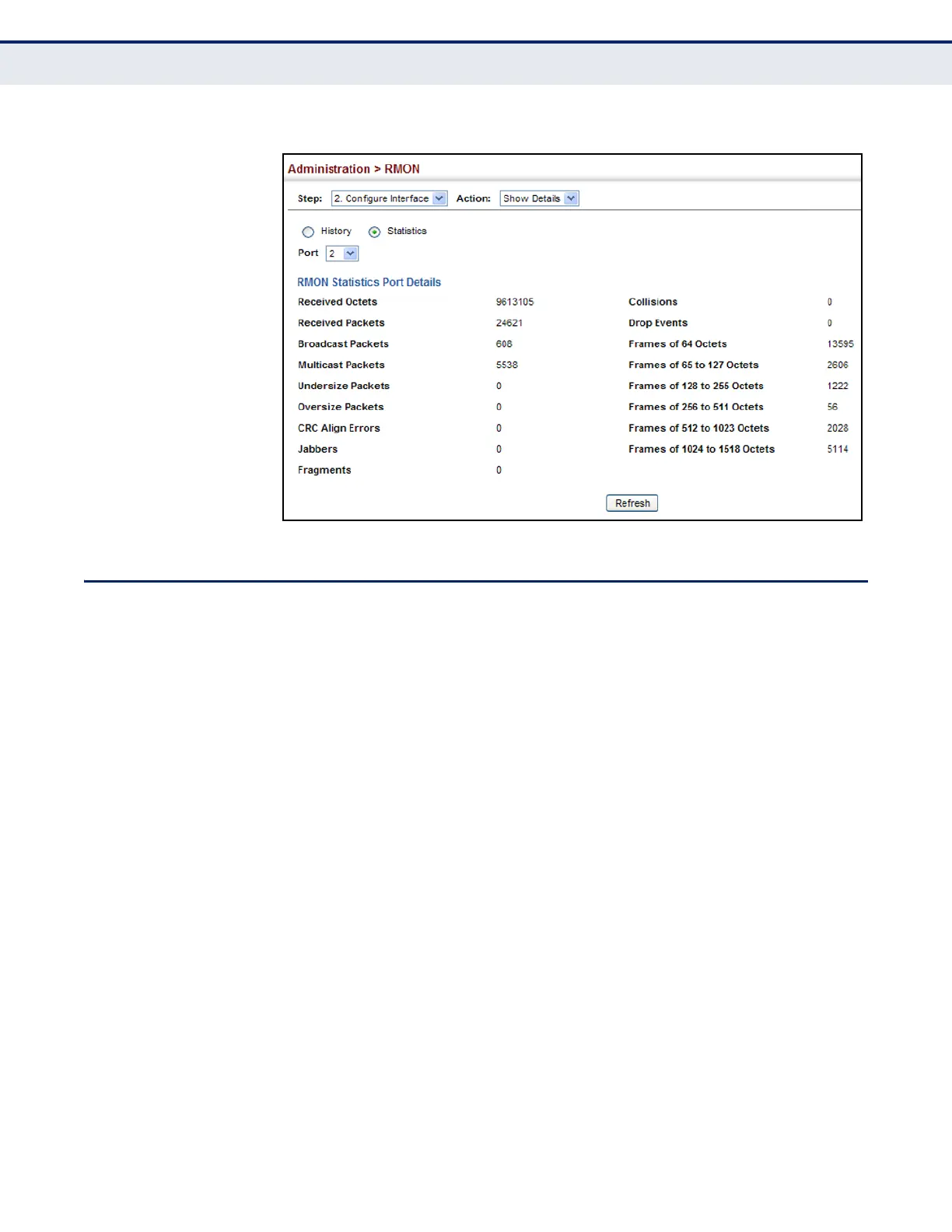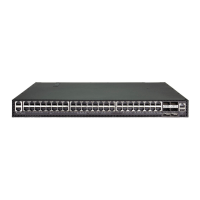C
HAPTER
14
| Basic Administration Protocols
Switch Clustering
– 482 –
Figure 276: Showing Collected RMON Statistical Samples
SWITCH CLUSTERING
Switch clustering is a method of grouping switches together to enable
centralized management through a single unit. Switches that support
clustering can be grouped together regardless of physical location or switch
type, as long as they are connected to the same local network.
COMMAND USAGE
◆ A switch cluster has a primary unit called the “Commander” which is
used to manage all other “Member” switches in the cluster. The
management station can use either Telnet or the web interface to
communicate directly with the Commander through its IP address, and
then use the Commander to manage Member switches through the
cluster’s “internal” IP addresses.
◆ Clustered switches must be in the same Ethernet broadcast domain. In
other words, clustering only functions for switches which can pass
information between the Commander and potential Candidates or
active Members through VLAN 4093.
◆ Once a switch has been configured to be a cluster Commander, it
automatically discovers other cluster-enabled switches in the network.
These “Candidate” switches only become cluster Members when
manually selected by the administrator through the management
station.
◆ There can be up to 100 candidates and 36 member switches in one
cluster.

